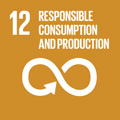- Docente: Alessandra Luati
- Credits: 6
- SSD: SECS-S/01
- Language: English
- Teaching Mode: In-person learning (entirely or partially)
- Campus: Bologna
- Corso: Second cycle degree programme (LM) in Quantitative Finance (cod. 8854)
Learning outcomes
The aim of the course is to provide the basis for modeling and statistical analysis of financial data. By the end of the course the student should be able to apply non-linear models, such as GARCH and extensions, including dynamic conditional score models, to estimate and test the capital asset pricing models, to portfolio selection problems or to estimate the value at risk. Attention will be given also to non-parametric methods.
Course contents
Review of the basic and most important methods and tools for non linear time series analysis. Time varrying parameter models: parameter driven models and observation driven models. Analysis of time series with stochastic volatility: GARCH models and extensions, up to score driven models. Analysis of heavy tailed data.
Readings/Bibliography
Textbook
Franke J., Hardle W.K., Hafner C.M. (2011), Statistics of Financial Markets, Springer (third edition)
Further reference
Harvey, A.C. (2013) Dynamic Models for Volatility and Heavy Tails, with Applications to Financial and Economic Time Series, Cambridge University Press.
Teaching methods
Lectures, class exercises, laboratory. The course is usually structured in one session in class followed by one session in lab.
Assessment methods
Every week during the course, students receive an homework which consists of theoretical questions, exercises and applications to be done with the computer. Students can decide either to do their weekly homeworks and give them to the teacher or to exercise when they like. In the former case, students have direct access to an oral exam which is a discussion of the homweork themselves (with the aim of verifying if they have really done and understood the exercises). In the latter case, students will be required to give a written examination, which essentially is a synthesis of the homework, i.e. it is made by theoretical questions, exercises or proofs and comments to a code. The written exam will be contextually discussed in an oral exam. The final mark will be assigned based on the level of preparation and consciousness of the student.
Teaching tools
Lessons and lab are based on the textbook, notes and papers that can be found on the institutional teacher web-site and in Alm@DL.
Office hours
See the website of Alessandra Luati
SDGs



This teaching activity contributes to the achievement of the Sustainable Development Goals of the UN 2030 Agenda.
